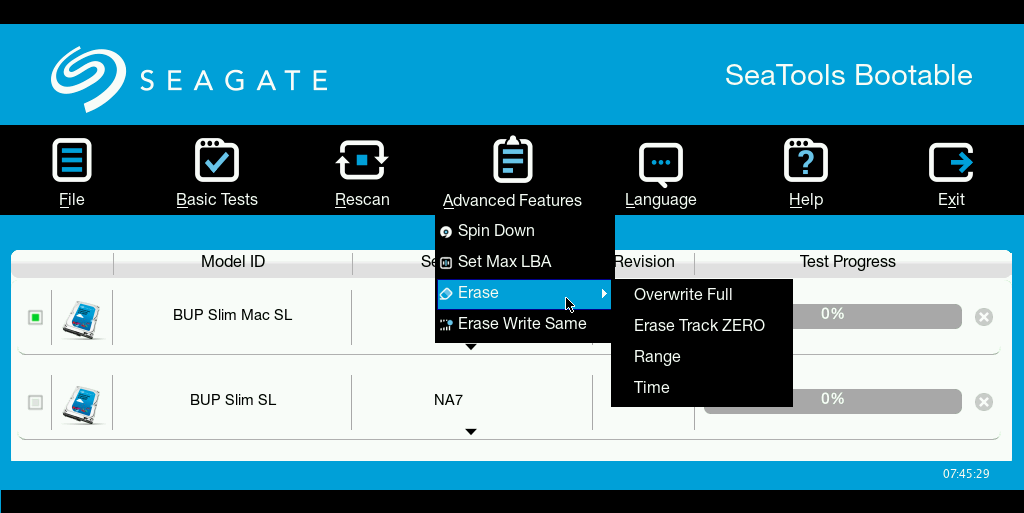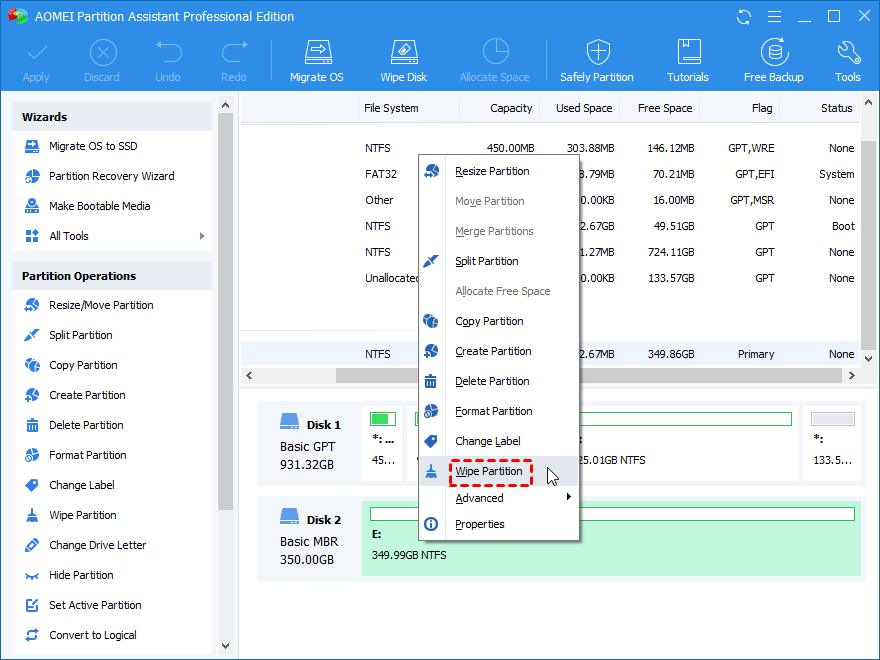
Select the Advanced Tests menu, then select SED Crypto Erase. If you do not see this option, verify that you have an SED. Note: If you do not have an SED, you can select the Overwrite Erase option, and SeaTools will perform a write of zeros across the entire drive to sanitize it. This process can take several hours depending on the drive size. Erase Track Zero - Quick Zero fill to erase. SeaTools for DOS is a comprehensive, easy-to-use diagnostic tool that helps you quickly determine what is preventing you from accessing data on your desktop or notebook computer. It includes several tests that will examine the physical media on your Seagate or Maxtor disc drive and any non-Seagate.
Seagate Tools Download

Seagate Tools Erase Track Zero Turn Mower

Seagate Tools Erase Track Zero
Case:
I have some hard drives that I had donated, on the condition that I zero-fill them. Zero-fill will erase all data on a hard drive, but this needs to be differentiated from a low-level format, which could damage newer (pretty much anything over 512MB) drives. The key is to find a way to wipe the data on a hard drive without destroying the current manufacturer's low-level format. I searched the web and found DOS utilities that sounded like low-level format utilities and usually were vendor specific, but then I ran into some information about using the simple Linux dd command to zero-fill.
Solution:
What you need is a bootable Linux, there are several available, booting a live Linux such as knoppix or even Tom's RTB, a bootable Linux that fits on floppy, but I happened to use my trusty Slackware Installation CD which, during the install, dumps you to a handy root shell for this. When you boot into a command shell, as root, simply pick the drive you want to fill, hda is primary master, hdb is primary slave, hdc is secondary master, sda is the first SCSI drive, etc, and use the command:
WARNING! This will destroy ALL data on the hard drive, all boot sector info and all data on all partitions. It will not however render the disk useless, you simply have a clean disk that only needs to have partitions created and a new boot sector installed, which will happen when you install any OS including Linux or Windows. This is a good way to clean up any bad partitions, viruses, botched installs or data that you don't want to be seen (OK, it is theoretically possible to forensically retrive data after using this method, but not likely and not doable by the average computer user) and it is simple to do with existing GNU/Linux! |
|


